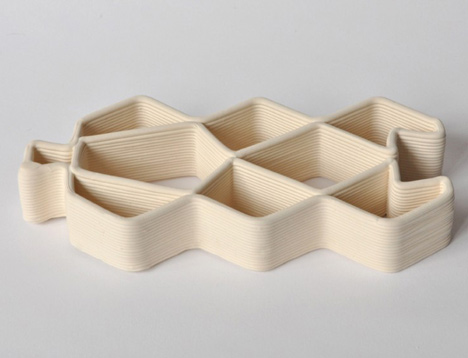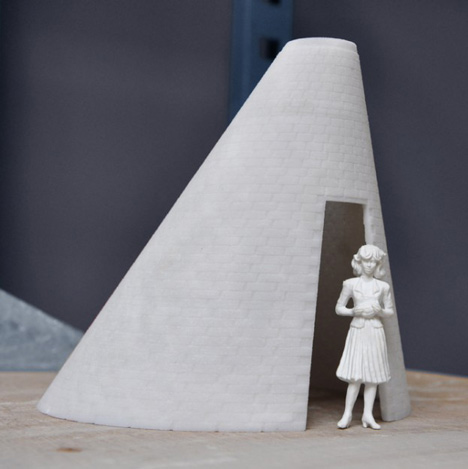چند سال اخیر و بعد از ورود و توسعه استفاده از پرینترهای سه بعدی در دفاتر کوچیک و بزرگ دیزاین، شاهد تلاشهای فردی و گروهی برای توسعه پرینترهای سه بعدی در ابعاد معماری واقعی هستیم.
برخی تلاشها معطوف به ساخت پرینترهای بزرگی هستند که بتونن در آن واحد بنای معماری یا سازهی اون رو پرینت کنن و معماری رو شکل بدن که از این نوع تلاشها تا به حال در یانون دیزاین هم مواردی با هم دیدیم. مثل این + و + و + و + و +
در مقابل برخی نگاه های نوآورانه در پی توسعهی روش هایی هستند که با همین ابزارهای کوچک و رومیزی بتونن یک معماری رو پرینت کنن. در واقع با خرد کردن معماری و سازه اون به قطعات قابل پرینت توسط دستگاه های کوچک بتونن یک بنای معماری رو درون استادیو و روی میز کارشون مدل کنن و بسازن و در سایت مورد نظر نصب کنن.
برایان پیترز یکی از اون افراده که اگر چه در پروژههای ساخت پرینترهای بزرگ هم ورود پیدا کرده اما یکی دو سال از عمر حرفه ای خودش رو تا به این جا مصروف اون کرده که بتونه با پرینتر سه بعدی رومیزی دفتر خودش به پرینت بناهای معماری در ابعاد اصلی موفق بشه.
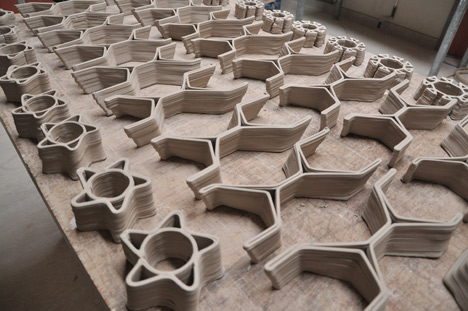
architect Brian Peters has adapted a desktop 3D printer to produce ceramic bricks for building architectural structures.

“I’ve been working with desktop 3D printers for the past couple of years and wanted to transform the machine to build something on a larger, more architectural scale,” Peters told Dezeen.
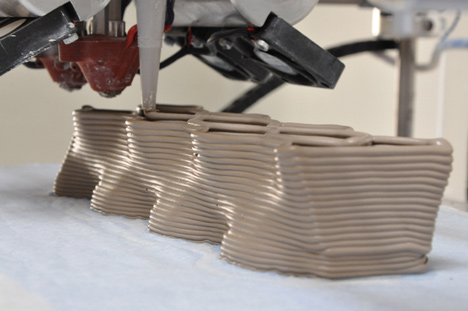
A 6-week residency at the European Ceramic Work Centre in the south of the Netherlands provided him with the opportunity to experiment with printing ceramics from a liquid earthenware recipe normally used in mould-making.
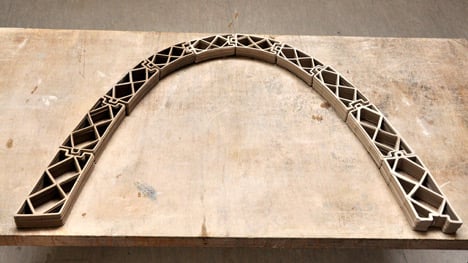
The only modification required for the printer was the addition of a custom extrusion head.
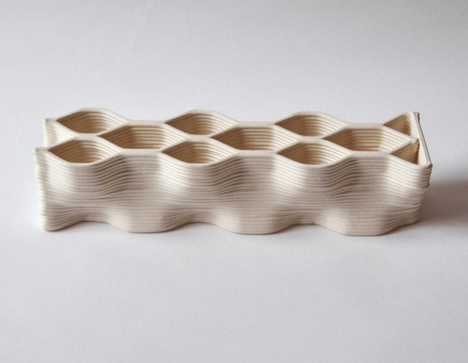
The resulting Building Bytes project predicts that 3D printers will become portable, inexpensive brick factories for large-scale construction.
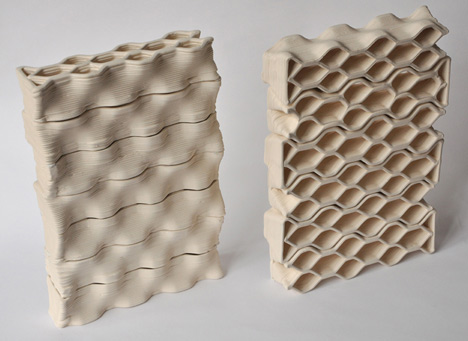
“You could have several of these machines working simultaneously on site using pre-made or locally manufactured material,” he says. “It doesn’t have to be necessarily ceramic – it could be concrete or cement or any mixture of building materials.”
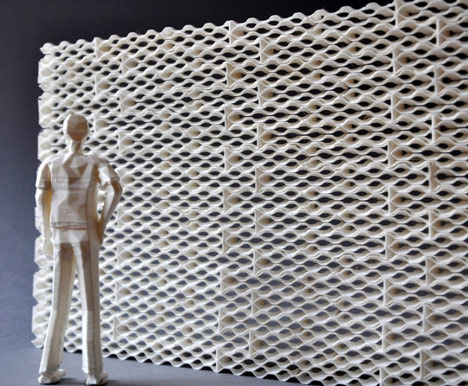
Peters developed two approaches to construction using the bricks: a uniform structure using multiples of the same brick, or a varied structure where each brick is uniquely shaped to create a complex form.
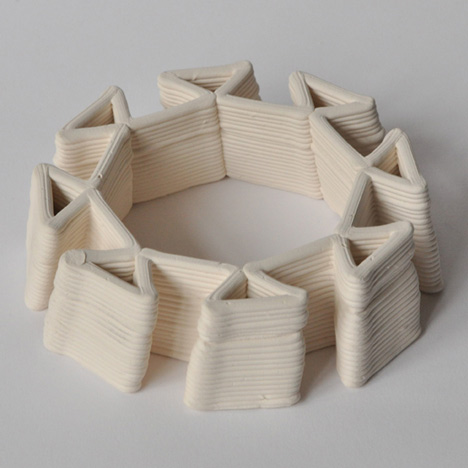
“It takes 15 minutes to print a brick at the moment so I don’t think I’d be necessarily competing with existing construction materials but the benefits are that you can design a custom-made house or structure and have it assembled on site,” he said.
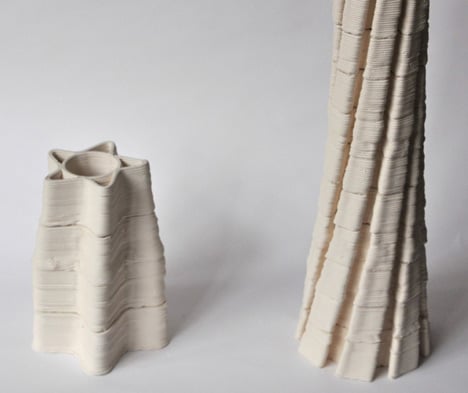
For Dutch Design Week Peters demonstrated the machine and showed some of the brick patterns he’s developed at Schellensfabriek, a former textile factory in Eindhoven, as part of the Show Your Color exhibition presenting work from artists’ residencies with Dutch organisations including the European Ceramic Work Centre.
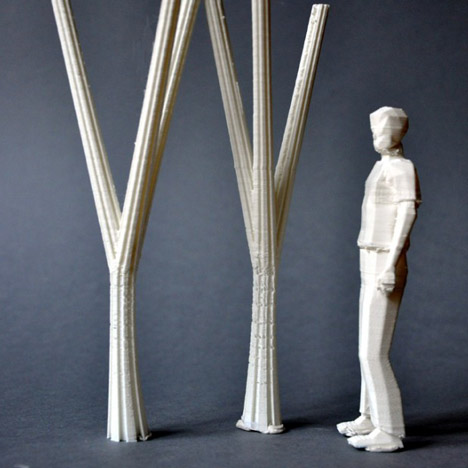
Based in Amsterdam, Peters is co-founder of architecture studio Design Lab Workshop and is currently working with DUS Architects to create a large 3D printer for making full-scale structures.
